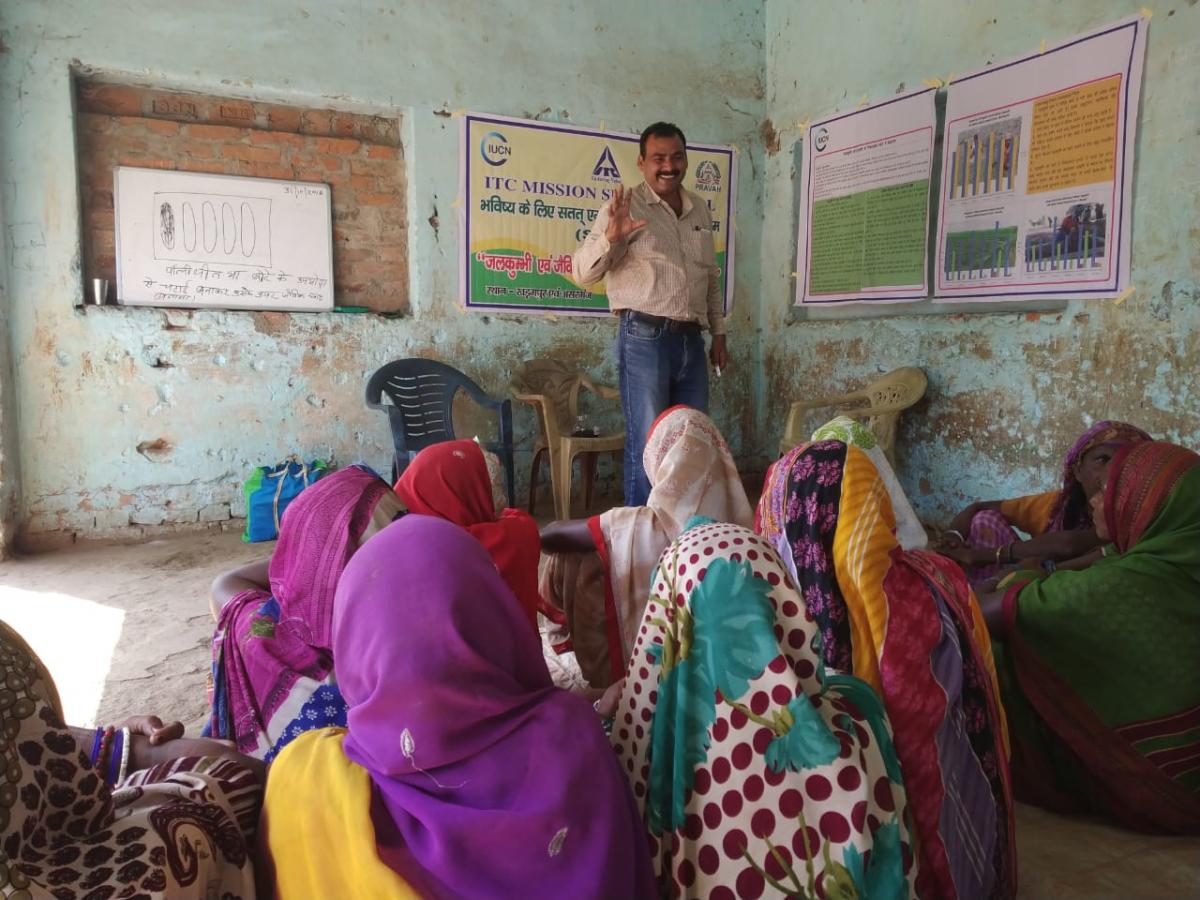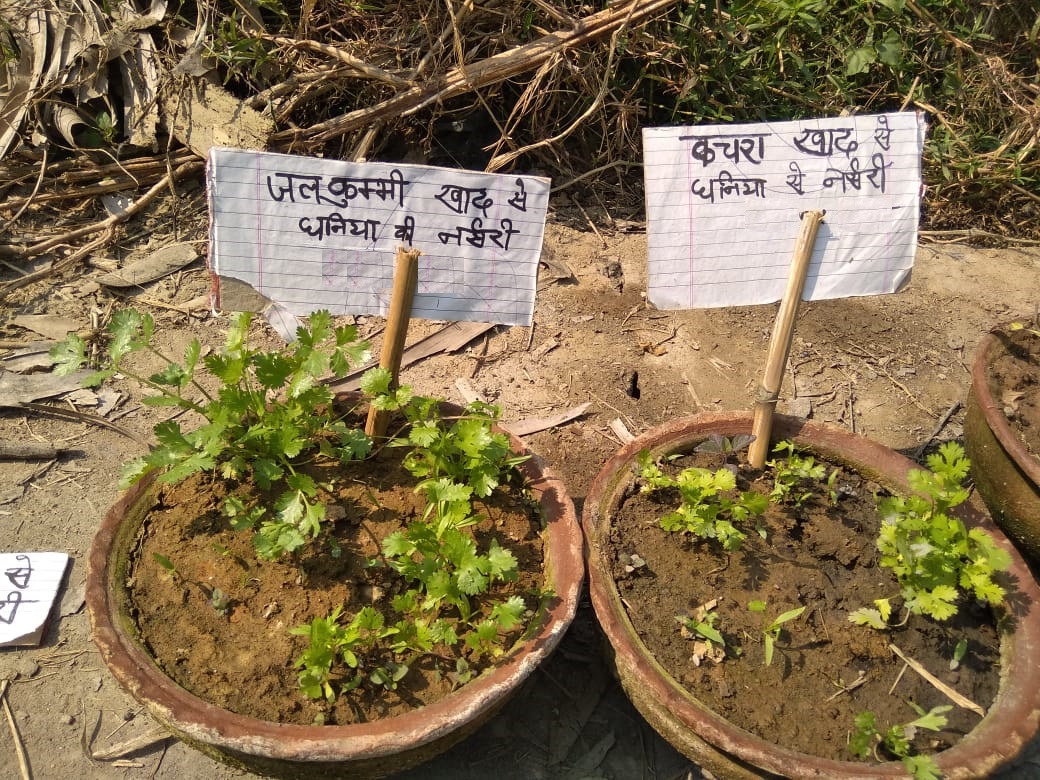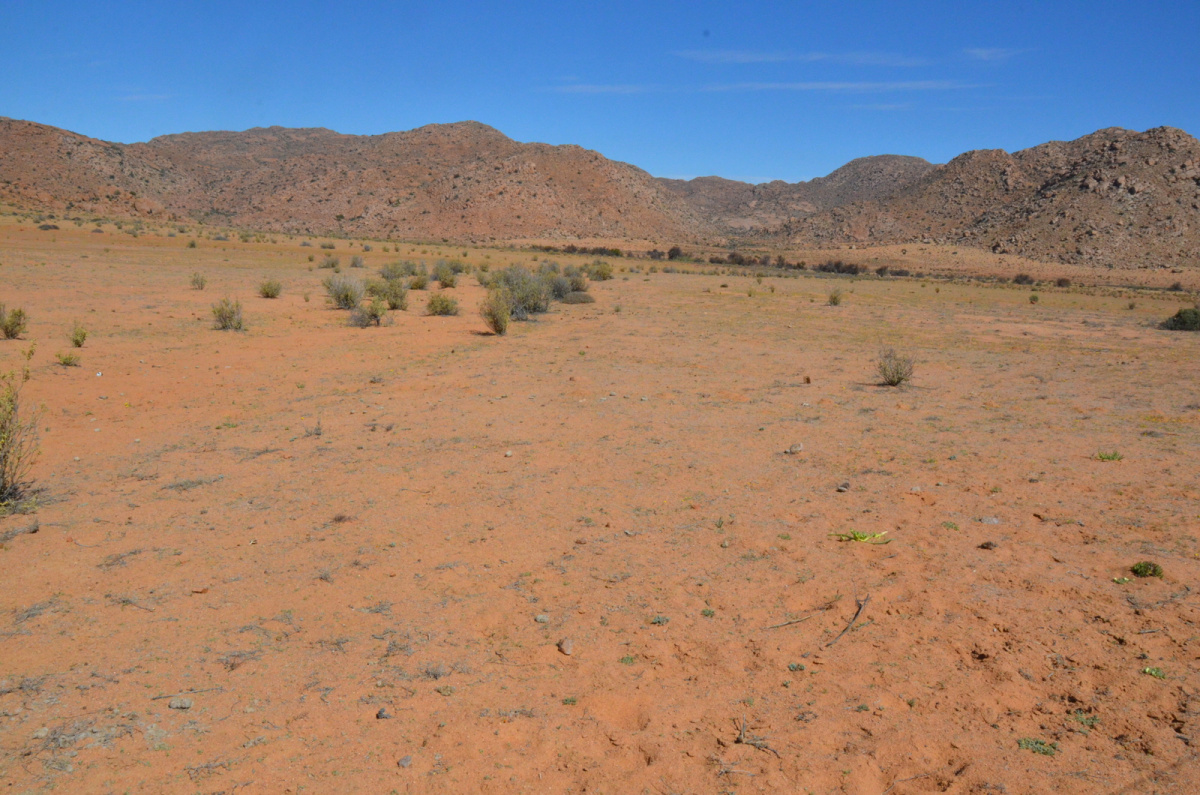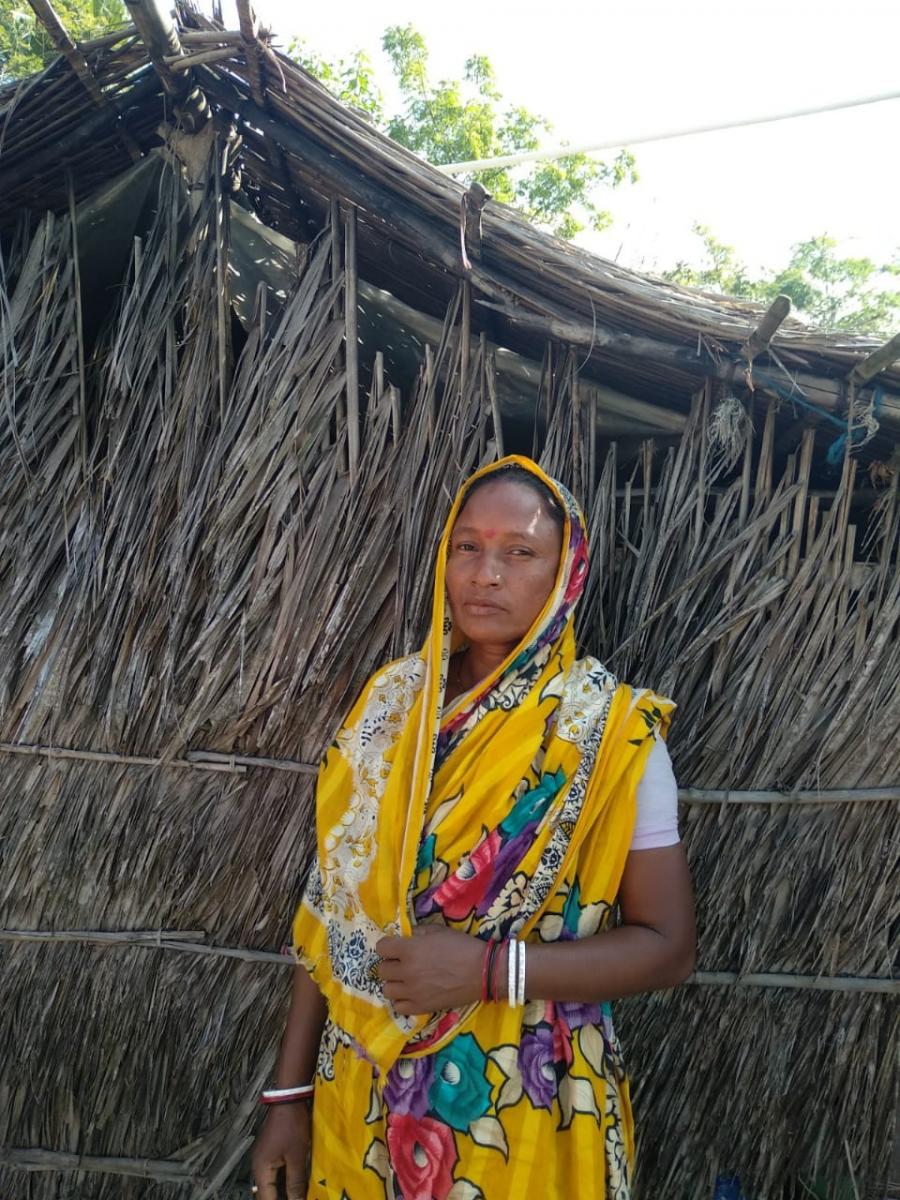From invasive to compost: Water hyacinth for compost preparation in Munger, Bihar
The IUCN India - ITC Ltd. partnership project on ‘Sustainable Agriscapes for the Future’ found that water bodies of the Kharagpur Agriscape cluster are infested with different invasive species, especially water hyacinth. This invasive is not only degrading the aquatic ecosystems of the area but also affecting the quality and availability of water, especially for irrigation. It is also adversely affecting the growth and survival of native fish species. In order to overcome this issue, a series of discussions were organised with researchers, academicians and subject matter experts, and it was decided that the best way to control the infestation of water hyacinth in the water bodies of the area was to use them to prepare compost. As water hyacinth absorbs most of the nutrients from water for self-growth, it has a high nutrient content and may be used to prepare good quality compost. The local communities were thus involved and motivated to take up compost preparing activities using water hyacinth.
In order to study the quality and nutritional value of water hyacinth compost, three pilots were initiated in Banbarsha village of Kharagpur cluster. To compare the compost quality with other methods of composting, organic waste compost was also carried out along with the water hyacinth compost. Thus, six cemented pits were prepared, three each for organic waste and water hyacinth compost.
A training programme on compost preparation was also organised, where more than 70 participants from the three clusters of Asarganj, Kharagpur and Munger Sadar, along with representatives from Panchayat and Block level officers of different government departments participated. This was facilitated by Dr. Ranjan Kumar Mishra from Bhagalpur University. After first understanding how the local farmers prepared manure for their farms, Dr. Mishra explained the method of compost preparation using water hyacinth and organic waste. This was followed by an on-ground training on techniques for preparing compost.
Three women farmers were involved in the pilot compost preparation under the supervision of the IUCN team. Two rounds of compost were prepared and samples from both water hyacinth compost and organic waste compost were sent to the laboratory for testing their quality and nutritional content. A sample of farm yard manure prepared by conventional techniques was also sent to the laboratory for testing. A comparative analysis of the water hyacinth compost, organic waste compost and farm yard manure revealed that the presence of organic Carbon along with Nitrogen, Phosphorus and Potassium was comparatively higher in the water hyacinth compost. A training programme was organised for the local community, where the result of the compost preparation was disseminated and the participants were motivated to take up compost preparing activities using water hyacinth. To further motivate the local community of Asarganj cluster, a similar training was also organised at Chorgaon village, where Dr. Ranjan Mishra shared the laboratory results with the participants, explained the steps of compost preparation, and demonstrated water hyacinth compost preparation techniques.
Smt. Ruby Devi from Banbarsha who was part of the pilot on compost preparation shared that she now used only the water hyacinth compost for growing vegetables like okra, ridge gourd, brinjal and bottle gourd. She had completely stopped the use of pesticides and insecticides, and felt that the yield from her pilot plot was quite good. She said, “I got so many vegetables from this compost that I had to distribute the surplus vegetables to other families in the village”.
The project team feels that upscaling of such pilots will not only improve the health of aquatic ecosystems by removing this invasive species from the water bodies, but also improve the soil health and productivity of the agricultural land through the application of compost prepared from the collected water hyacinth.
To read more on the sustainable agriscapes project, please click here.






